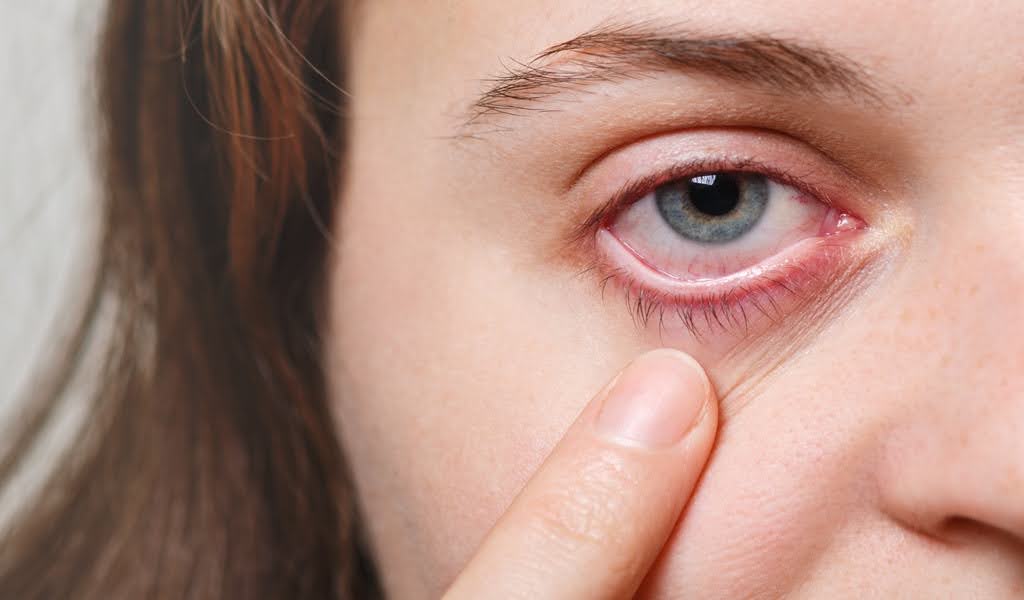7 Common and Serious Side Effects of Acetaminophen
Key TakeawaysAcetaminophen is effective but can cause side effects, some serious.Common side effects include nausea and rash, while serious ones involve liver damage.Knowing [...]
Read More
Medically reviewed by Alan Lucks | MD, Alan Lucks MDPC Private Practice - New York on June 6th, 2025.

Eye inflammation can manifest in various forms, with uveitis and conjunctivitis being two of the most common conditions affecting the eyes. While they may share some symptoms, they differ significantly in terms of causes, severity, and treatment options. Understanding these differences is crucial for effective diagnosis and management. This article delves into the distinctions between uveitis and conjunctivitis, exploring their symptoms, causes, treatments, and more.
Uveitis refers to the inflammation of the uvea, the middle layer of the eye, which includes the iris, ciliary body, and choroid. This condition can affect one or both eyes and may lead to serious complications if left untreated. Uveitis can occur at any age and may be associated with systemic diseases, making it crucial for individuals experiencing symptoms to seek prompt medical attention. Early diagnosis and treatment are essential to prevent potential vision loss and to manage underlying conditions that may contribute to the inflammation.
Uveitis is categorized into several types based on the part of the uvea that is affected:
Anterior Uveitis: Involves inflammation of the iris and is the most common form.
Intermediate Uveitis: Affects the ciliary body and vitreous humor.
Posterior Uveitis: Involves inflammation of the choroid and retina.
Panuveitis: Affects all parts of the uvea.
Each type of uveitis may present unique challenges in terms of diagnosis and treatment. For instance, anterior uveitis is often associated with systemic inflammatory diseases, while posterior uveitis can be linked to infections or other serious health conditions. Understanding the specific type of uveitis is vital for tailoring an effective treatment plan and monitoring for potential complications.
The symptoms of uveitis can vary depending on the type and severity of the inflammation. Common symptoms include:
Eye redness
Pain and discomfort
Blurred vision
Light sensitivity (photophobia)
Floaters or spots in vision
Patients may experience one or multiple symptoms, and the onset can be sudden or gradual. In some cases, individuals might notice a significant change in their vision or experience a sudden increase in floaters, which can be alarming. It's important for patients to monitor their symptoms closely and report any changes to their healthcare provider, as this can aid in timely intervention and management of the condition.
Uveitis can result from various factors, including:
Infections: Viral, bacterial, or fungal infections can trigger inflammation.
Autoimmune Disorders: Conditions like rheumatoid arthritis or lupus can lead to uveitis.
Trauma: Injury to the eye can provoke inflammatory responses.
Unknown Factors: In many cases, the exact cause remains unidentified.
In addition to these causes, certain genetic predispositions may increase the risk of developing uveitis. For example, individuals with a family history of autoimmune diseases may be more susceptible.
Furthermore, environmental factors, such as exposure to certain pathogens or toxins, may also play a role in triggering uveitis. Understanding these potential causes can help in the development of preventive strategies and personalized treatment approaches for those at risk.

Effective treatment for uveitis is essential to prevent complications such as vision loss. The treatment approach typically depends on the underlying cause and severity of the condition. Uveitis can arise from various factors, including autoimmune disorders, infections, or even trauma, making a tailored treatment plan vital for each individual patient.
Common treatment options include:
Corticosteroids: These are the primary treatment for reducing inflammation, and they can be administered in various forms, including eye drops, oral tablets, or injections. The choice of delivery method often depends on the severity and location of the inflammation.
Immunosuppressants: Used for autoimmune-related uveitis, these medications help to dampen the body's immune response, thereby reducing inflammation and preventing flare-ups. Examples include methotrexate and azathioprine, which may be prescribed for long-term management.
Antibiotics or Antivirals: Prescribed if an infection is the cause, these medications target specific pathogens. For instance, if uveitis is linked to a viral infection like herpes simplex, antiviral drugs such as acyclovir may be utilized.
In some cases, eye drops may be used for localized treatment, while oral medications or injections may be necessary for more severe cases.
Additionally, biologic therapies are emerging as a promising option for chronic uveitis, particularly in patients who do not respond well to traditional treatments. These targeted therapies can help manage inflammation by interfering with specific pathways in the immune system.
Regular follow-up appointments with an eye care specialist are crucial for monitoring the condition and adjusting treatment as needed. Patients should be vigilant about reporting any changes in vision or new symptoms. During these visits, the eye care specialist may perform comprehensive examinations, including visual acuity tests and imaging studies, to assess the effectiveness of the treatment and the overall health of the eye.
Moreover, lifestyle modifications can play a significant role in managing uveitis. Patients are often advised to maintain a balanced diet rich in antioxidants, stay hydrated, and avoid smoking, as these factors can influence overall eye health. Engaging in regular exercise and managing stress levels may also contribute to a better immune response, potentially reducing the frequency and severity of uveitis flare-ups. Education about the condition is equally important, empowering patients to actively participate in their treatment plans and recognize early signs of complications.
Conjunctivitis, commonly known as pink eye, is the inflammation of the conjunctiva, the thin membrane covering the white part of the eye and the inner eyelids. This condition is more prevalent than uveitis and is often less severe. While conjunctivitis can affect individuals of all ages, it is particularly common among children, who may be more susceptible to viral infections and allergens due to their close interactions with peers and environments.
Conjunctivitis can be classified into three main types:
Viral Conjunctivitis: Often caused by adenoviruses, this type is highly contagious. It typically spreads through direct contact with infected secretions or contaminated surfaces. Symptoms may appear several days after exposure, making it crucial to maintain good hygiene practices, especially in communal settings.
Bacterial Conjunctivitis: Caused by bacteria, this type can also spread easily and may require antibiotic treatment. Common bacterial strains include Staphylococcus and Streptococcus, and while they can affect anyone, it is particularly prevalent in children. Prompt treatment is essential to prevent complications and further spread.
Allergic Conjunctivitis: Triggered by allergens such as pollen, dust, or pet dander, this type is not contagious. It often coincides with other allergic symptoms, such as sneezing and a runny nose, and can be seasonal or perennial, depending on the allergens involved.
The symptoms of conjunctivitis can include:
Redness in the white part of the eye
Itching or burning sensation
Discharge from the eye (watery or thick)
Crusty eyelids, especially upon waking
Increased sensitivity to light
Symptoms can vary based on the type of conjunctivitis and may affect one or both eyes. In some cases, individuals may also experience swelling of the eyelids and a gritty feeling in the eye, which can be particularly uncomfortable. It's important to note that while conjunctivitis is often self-limiting, persistent or severe symptoms warrant a visit to a healthcare provider for proper diagnosis and treatment.
The causes of conjunctivitis are diverse:
Infections: Viral and bacterial infections are common culprits. Viral conjunctivitis is often associated with respiratory infections, while bacterial conjunctivitis may arise from direct contact with infected individuals or contaminated objects.
Allergens: Pollen, dust mites, and pet dander can trigger allergic reactions. Individuals with a history of allergies may find that their conjunctivitis flares up during certain seasons or after exposure to specific triggers.
Irritants: Smoke, chlorine in swimming pools, and other chemicals can cause irritation. Environmental factors, such as pollution or exposure to harsh winds, can also exacerbate symptoms, leading to discomfort and increased tearing.
Understanding these causes is essential for prevention and management. For instance, those prone to allergic conjunctivitis may benefit from avoiding known allergens and utilizing antihistamines or eye drops designed to alleviate symptoms.
Additionally, practicing good hygiene, such as regular handwashing and avoiding touching the eyes, can significantly reduce the risk of infectious conjunctivitis.
While conjunctivitis is often self-limiting, treatment can help alleviate symptoms and speed recovery.
Treatment for conjunctivitis varies based on the type:
Viral Conjunctivitis: Typically resolves on its own; supportive care includes cool compresses and artificial tears.
Bacterial Conjunctivitis: Antibiotic eye drops or ointments are commonly prescribed.
Allergic Conjunctivitis: Antihistamine eye drops or oral medications can help relieve symptoms.
In addition to medical treatment, several home remedies can provide relief:
Applying cool compresses to the eyes
Using artificial tears to soothe irritation
Avoiding allergens or irritants when possible
While both uveitis and conjunctivitis involve inflammation of the eye, they differ significantly in various aspects. The following table summarizes the key differences:
Location of Inflammation
Uveitis: Uvea (iris, ciliary body, choroid)
Conjunctivitis: Conjunctiva
Causes
Uveitis: Infections, autoimmune disorders, trauma
Conjunctivitis: Infections, allergens, irritants
Symptoms
Uveitis: Pain, blurred vision, light sensitivity
Conjunctivitis: Redness, itching, discharge
Severity
Uveitis: Can lead to serious complications
Conjunctivitis: Generally mild; rarely severe
Treatment
Uveitis: Corticosteroids, immunosuppressants
Conjunctivitis: Antibiotics, antihistamines, and supportive care

Accurate diagnosis is essential for effective treatment. Eye care professionals utilize various methods to differentiate between uveitis and conjunctivitis.
A thorough clinical examination is the first step in diagnosing eye inflammation. This often includes:
Visual acuity tests to assess vision
Slit-lamp examination to inspect the eye structures
Pupil reaction tests to evaluate nerve function
In some cases, further testing may be necessary:
Blood Tests: To identify underlying autoimmune conditions or infections.
Imaging Tests: Such as optical coherence tomography (OCT) or ultrasound, to visualize internal structures.
While not all cases of uveitis and conjunctivitis can be prevented, certain measures can reduce the risk of developing these conditions.
Preventive strategies include:
Managing chronic health conditions that may contribute to uveitis.
Protecting the eyes from trauma, especially during high-risk activities.
Regular eye examinations to monitor for early signs of inflammation.
To minimize the risk of conjunctivitis:
Practicing good hygiene, such as frequent hand washing.
Avoid touching the eyes with unwashed hands.
Staying away from known allergens and irritants when possible.
Both uveitis and conjunctivitis can significantly impact daily life, but with proper management, individuals can lead fulfilling lives. Understanding the condition, adhering to treatment plans, and maintaining regular follow-ups with healthcare providers are crucial steps.
Support groups and educational resources can provide valuable information and emotional support for those affected by eye inflammation. Connecting with others facing similar challenges can foster a sense of community and understanding.
It is vital to seek medical attention promptly if experiencing symptoms of eye inflammation. Early diagnosis and treatment can prevent complications and preserve vision. Signs that warrant immediate medical consultation include:
Severe eye pain
Sudden changes in vision
Persistent redness or swelling
Light sensitivity that worsens
Uveitis and conjunctivitis are two distinct forms of eye inflammation, each with its own set of causes, symptoms, and treatment options. Understanding the differences between these conditions is crucial for effective management and prevention of complications. By recognizing the symptoms and seeking timely medical intervention, individuals can maintain their eye health and overall well-being.
Discover the key differences between eye uveitis and conjunctivitis to take charge of your eye health! Empower yourself with knowledge to recognize symptoms, seek timely care, and protect your vision. Ask Doctronic to learn and make informed decisions for your well-being!
Key TakeawaysAcetaminophen is effective but can cause side effects, some serious.Common side effects include nausea and rash, while serious ones involve liver damage.Knowing [...]
Read MoreKey takeawaysWeight gain is a common concern for those considering intrauterine devices (IUDs) as birth control.Different types of IUDs may affect the body differently, but [...]
Read MoreKey takeawaysFacial eczema requires gentle care tailored to sensitive skin to reduce irritation and flare-ups.Identifying triggers and using appropriate skincare products are [...]
Read More